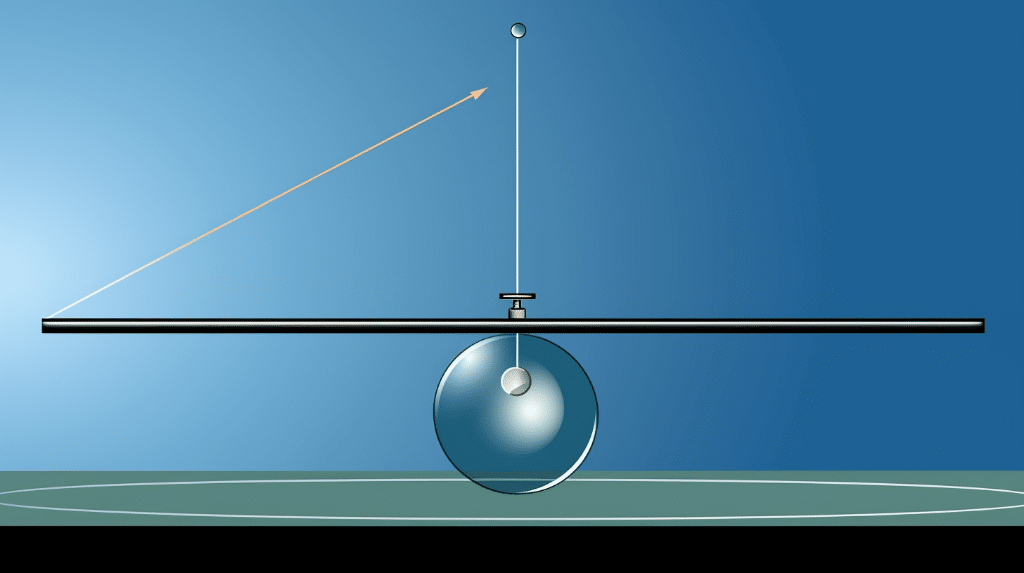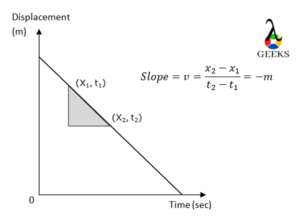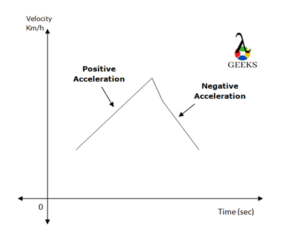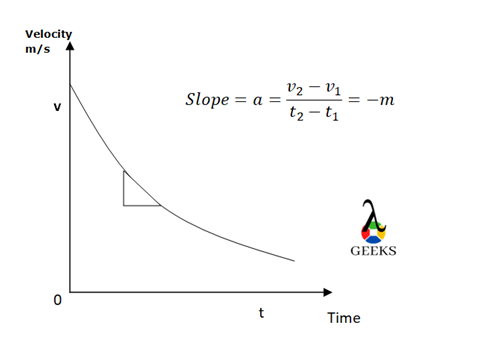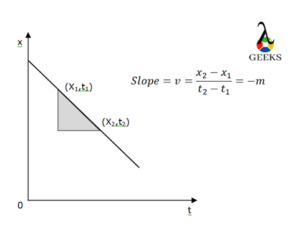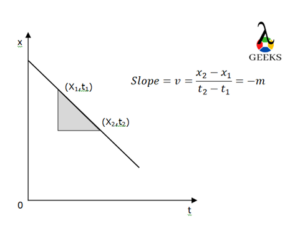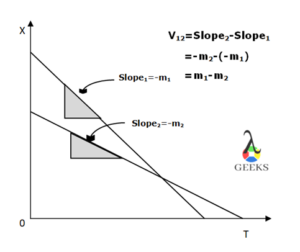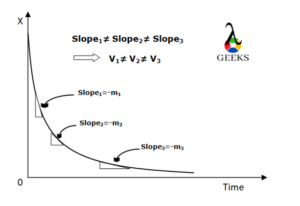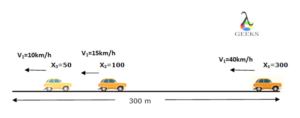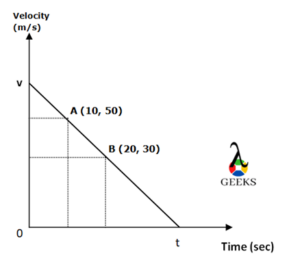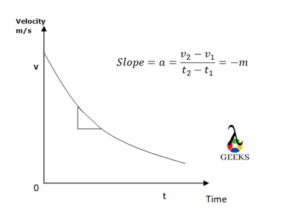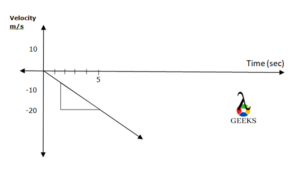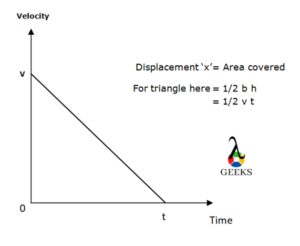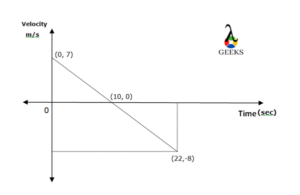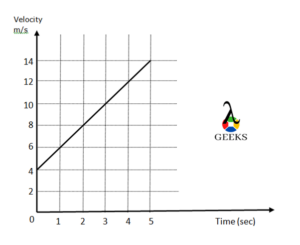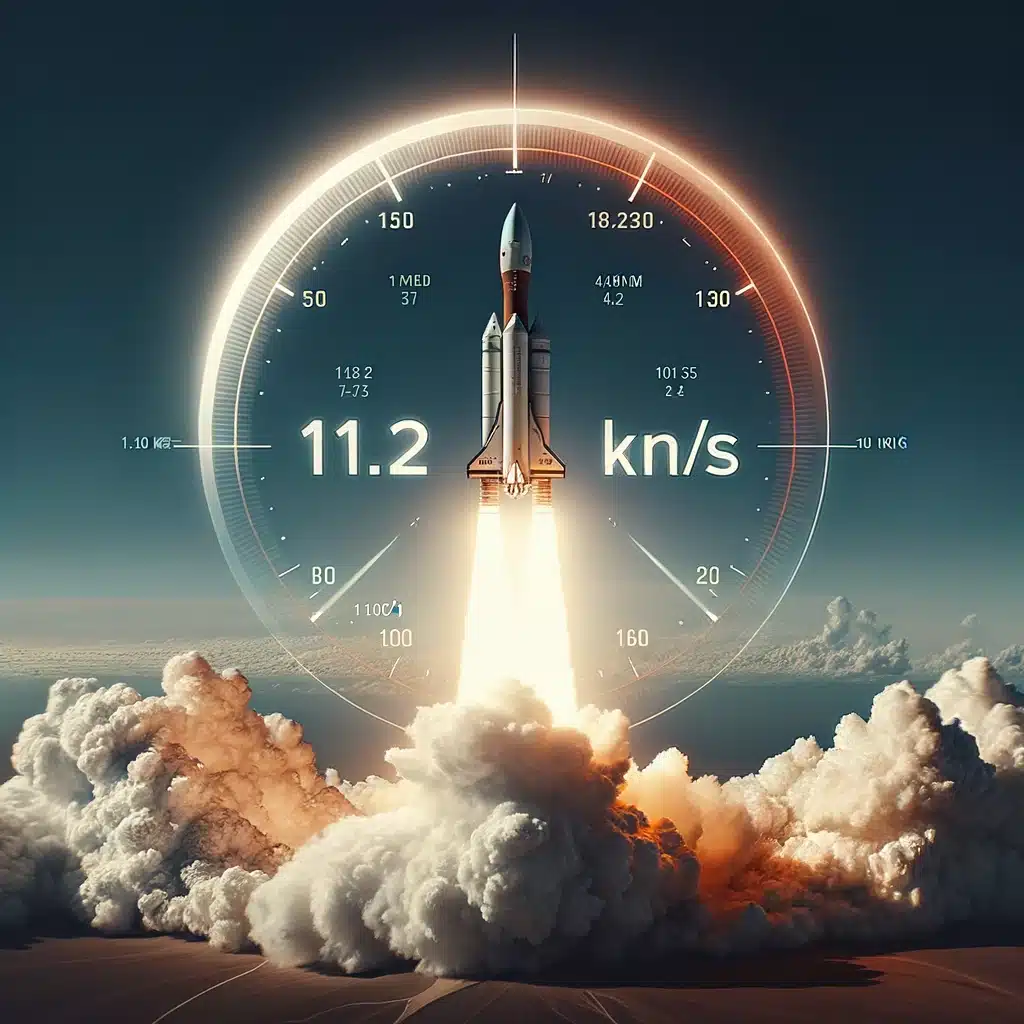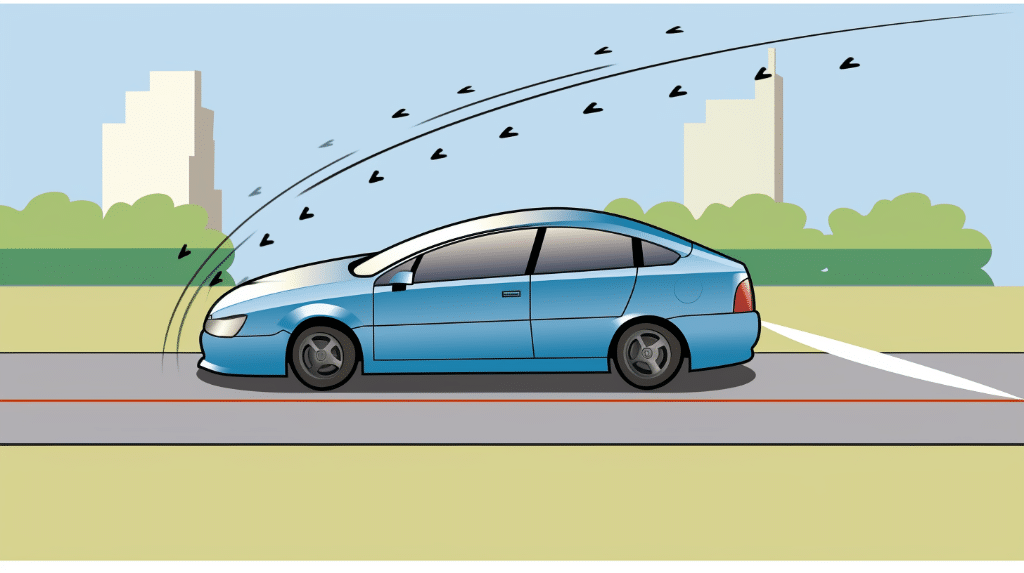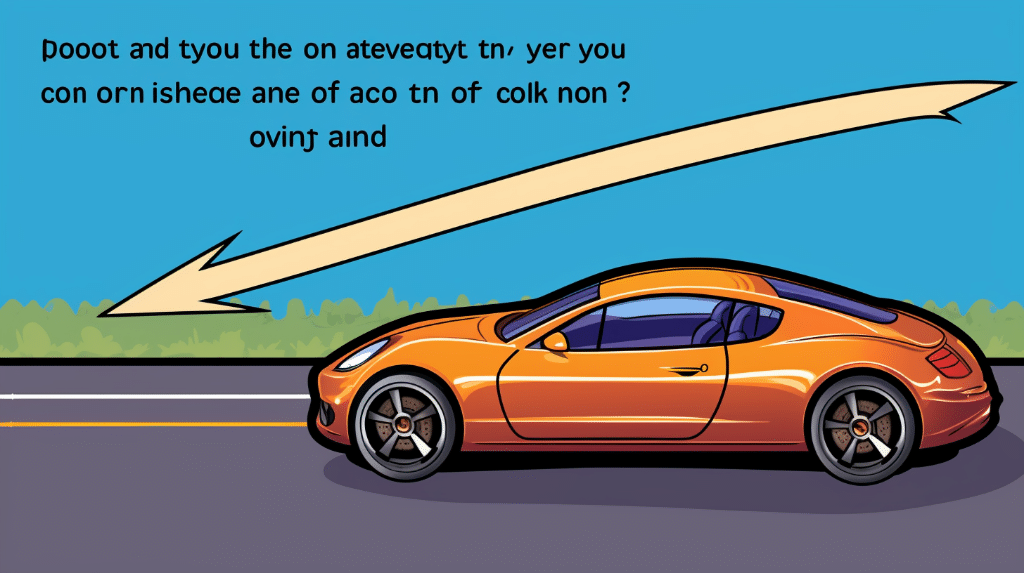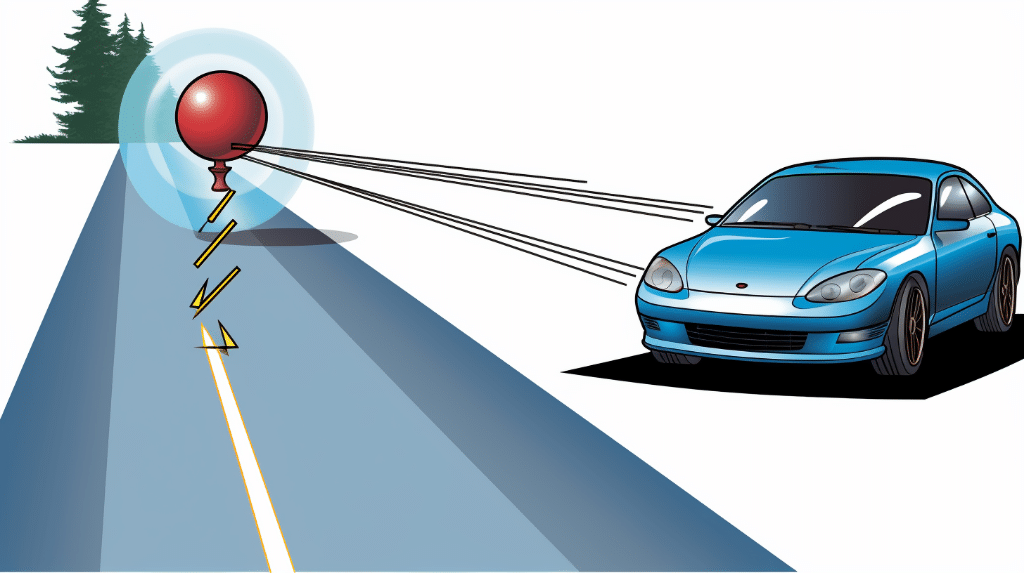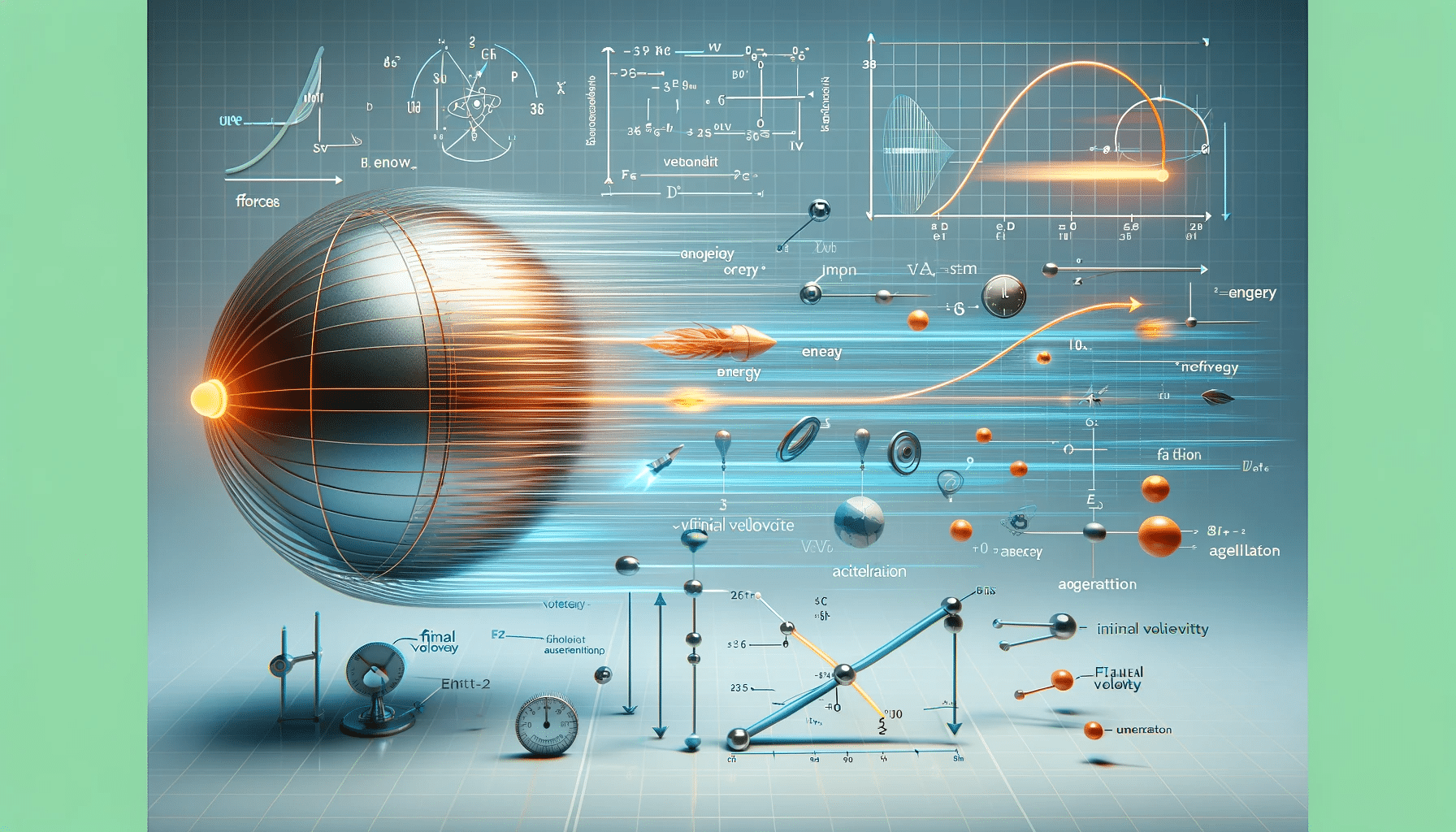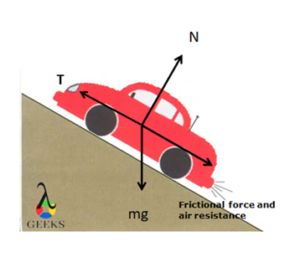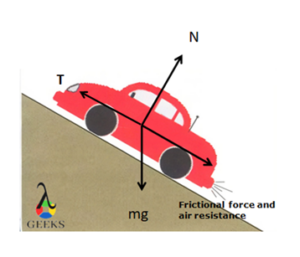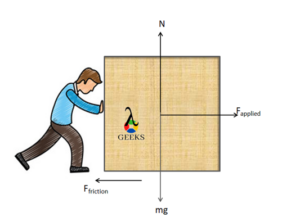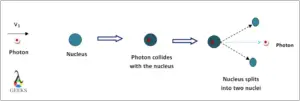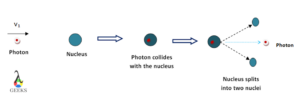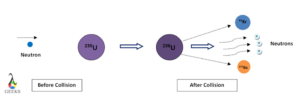In this article, we are going to discuss what causes negative velocity and zero acceleration, how does negative velocity exist, with some examples and problems.
When the system moves in the negative axis of its origin or slows down then the object is moving with negative velocity and if the object decelerates with constant rate then the object is said to have a negative velocity with zero acceleration.
What happens to Acceleration when Velocity is Negative?
If the displacement of the object is lowered than its initial movement, then the velocity of the object is reduced and measured as negative.
An object moving with negative velocity, which says that the preceding distance covered by the object with time is lowered, then the acceleration of the object is also reducing at the same time and is negative.
Let us elucidate the acceleration of the object moving with a negative velocity with an example. Consider an object slowing down its speed after traveling for a certain distance. After every 20 seconds, the velocity of the object was noted. The initial velocity of the object was 5 m/s and after 20 seconds it was noted that the velocity of an object was reduced to 3 m/s.
Then, the acceleration of the object is the difference between the final and initial velocity of the object divided by the time interval between which the change has occurred;
a1=(v2-v1)/ΔT=(3-5)/20=-2/20=0.1m/s2
Hence, we can see that the acceleration of the object slowing down is negative as the difference between the final and initial velocity is negative because the initial velocity of the object in motion is greater than that of the final velocity.
If we have a negative velocity of the object throughout its movement, that is, the direction of its displacement is opposite to its motion, then let us see what will be the effect on the acceleration of the object in this circumstance. It is obvious, that the object having negative velocity will reduce its velocity with time as it is decelerating.
Consider an object falling from the hill to the underlying ground area. Let’s say, the initial velocity of the object was -4m/s which then reduced further to -6m/s in 10 seconds then the acceleration of an object will be
a1=(v2-v1)/ΔT==[-6-(-4)]/10=0.2m/s2
Hence, the acceleration of an object will be negative if the velocity of the object is negative. Here, in this example, the velocity is taken as the negative because the displacement of the object is in a negative direction of its motion as it is falling down from the heights.
Read more on Negative Velocity And Negative Acceleration: Why, How, Graph, Example And Detailed Facts.
What is the Example of Zero Acceleration?
The object is said to have zero acceleration if the velocity of the object remains unvaried with time or is at rest.
All the objects at rest or moving with the same initial velocity of the displacement and maintain the same velocity for as long as it is in a motion irrespective of the external forces acting on it, then it is an example of zero acceleration.
Some examples of zero acceleration are, a photon which is a light particle and moves freely at a constant speed without accelerating, an object in space that does not experience the gravitation force and hence floats in the space, an object in a circular motion with its momentum conserved, a rock standing on a hill, a man walking at a constant speed, buoy floating on water, tree, a pole on street, etc.
Conditions for acceleration to be zero
There are two conditions where acceleration can be zero, they are:
Displacement equal to zero.
x=0
For an object at rest, the velocity of the object is zero and hence the acceleration of an object will also be equal to zero.

The initial and final velocity of the object is the same and remains constant.
Vinitial=Vfinal
Well, if the object is in a motion and preserves the constant velocity for all the time then the change in velocity of an object is zero and hence the acceleration is zero.

Negative Velocity v/s Time Graph for Zero Acceleration
The acceleration is zero if the velocity of the object is constant.
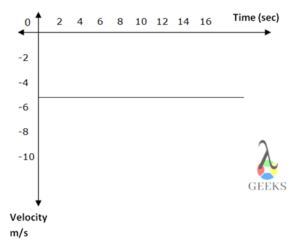
The velocity of the object remains the same and does not vary with time, hence we get a straight line on plotting the graph of velocity versus time graph. If the velocity remains the same, whether it is positive or negative, the acceleration will always be zero.
Can Acceleration be Positive when Velocity is Zero?
The acceleration can be positive or negative based on the variation in the velocity of the object.

As there is no velocity which implies that the object is stable at rest, there will be no acceleration of the object since the rate of change of velocity found at different time intervals will also be equal to zero as there is no motion of an object.
Well, all the objects in motion do define the speed, velocity, and acceleration too. The object in motion having zero acceleration implies that the object does have acceleration which is equal to zero. This suggests that the object has a uniform acceleration which does not change with time.
The acceleration of the object will be positive only when the object is moving with the positive velocity that is the velocity of the object adds up with time. If an object travels in the reverse direction or reduces its speed with time then the object will have negative velocity and hence the acceleration is negative. It is only when the object is at rest, its velocity will be equal to zero and therefore the acceleration does not exist in this case.
Read on varying acceleration on jolts.
Frequently Asked Questions
Q1. Consider a car climbing the steeper slope of a mountain, the displacement of a car after every 5 minutes was noted as 50m, 30m, and 15m. Calculate the velocity of a car varied every 5 minutes and hence find the acceleration of a car.
Solution:The displacement of a car in 5 minutes is 50m.
Then the initial velocity of a car for first 5 minutes duration was,

In next 5 minutes, the displacement was 30 m, hence the velocity was

And the final displacement was 15 m in 5 minutes, therefore the velocity was equal to

Hence, the acceleration of a car was

The acceleration of a car is very small but negative as the velocity of a car decreases at a minute rate.
Why does the object have zero acceleration?
An object moving at a uniform velocity or remaining at rest will have zero acceleration.
If there is no external force acting on the object that may have resulted in the change of the velocity or the direction of its motion then the object will continue to remain in a uniform motion with zero acceleration.
Also Read:
- Relative velocity in same direction
- How to find the kinetic energy and velocity
- How to find net force with mass and velocity
- How to compute velocity in neutron stars
- How can you find acceleration from a velocity time graph
- How to find average velocity
- How to find velocity in orbital motion
- How to measure velocity of fluid in porous medium
- How to calculate velocity in nanophysics
- Relative velocity after collision


